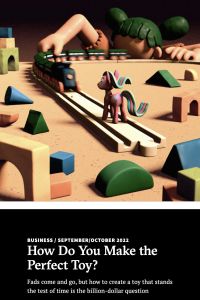Join getAbstract to access the summary!

Join getAbstract to access the summary!
Matthew Braga
How Do You Make the Perfect Toy?
Fads come and go, but how to create a toy that stands the test of time is the billion-dollar question
The Walrus, 2022
What's inside?
Some toys survive for decades, but most fizzle. Do the classics have a deeper appeal than nostalgia alone?
Recommendation
Most people can remember their favorite toy growing up, from a simple set of blocks to a Cabbage Patch Kid with eye color and hair that matched their own. But what makes a toy transcend generations and stay popular among kids, their parents and even their grandparents? Reporting for The Walrus, Matthew Braga takes a deep dive with industry experts and scientists into what exactly makes a toy a classic in this competitive, lucrative market.
Summary
About the Author
Matthew Braga is a writer and editor based in Toronto.

















Comment on this summary